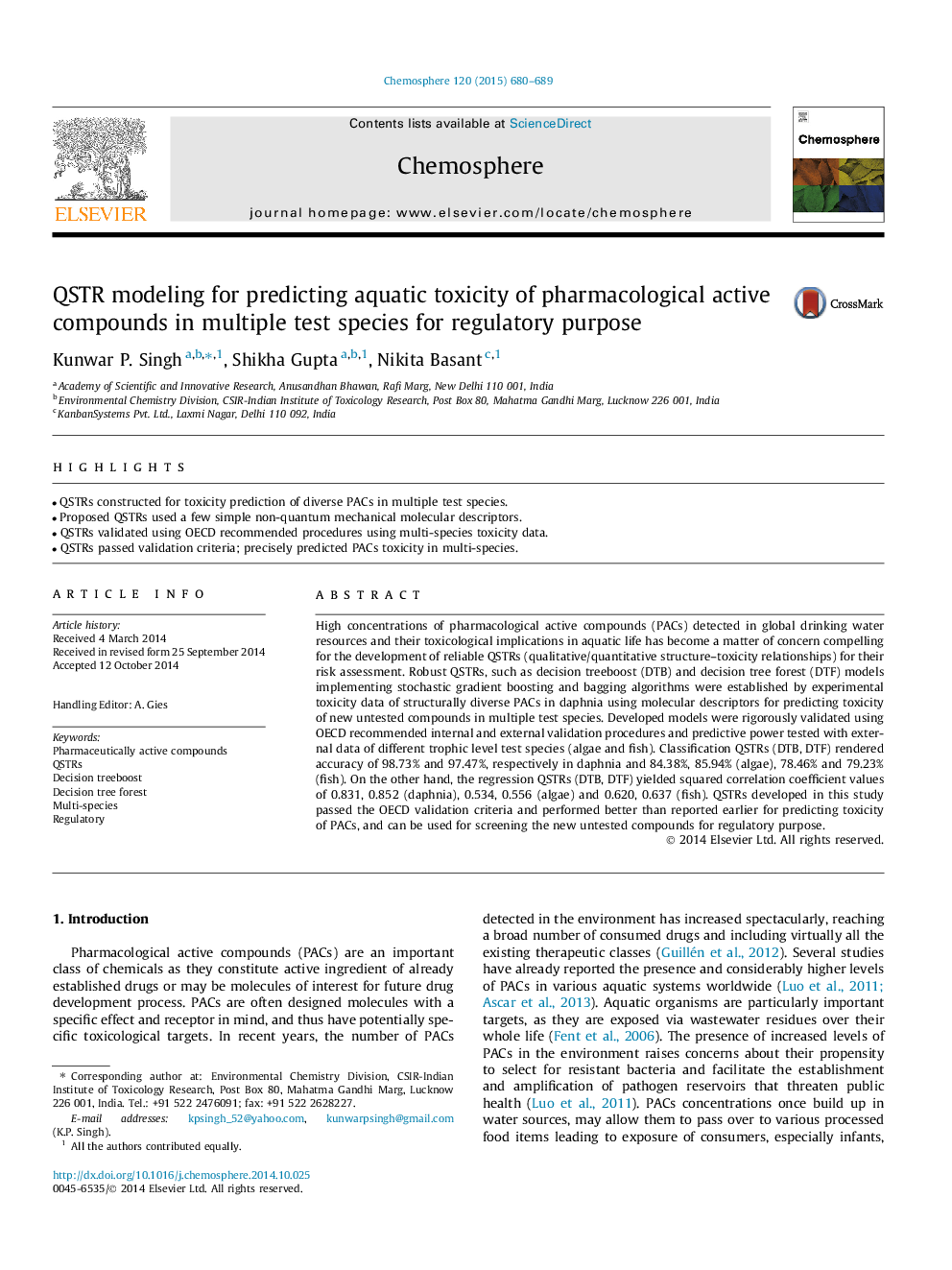| Article ID | Journal | Published Year | Pages | File Type |
|---|---|---|---|---|
| 6308305 | Chemosphere | 2015 | 10 Pages |
Abstract
High concentrations of pharmacological active compounds (PACs) detected in global drinking water resources and their toxicological implications in aquatic life has become a matter of concern compelling for the development of reliable QSTRs (qualitative/quantitative structure-toxicity relationships) for their risk assessment. Robust QSTRs, such as decision treeboost (DTB) and decision tree forest (DTF) models implementing stochastic gradient boosting and bagging algorithms were established by experimental toxicity data of structurally diverse PACs in daphnia using molecular descriptors for predicting toxicity of new untested compounds in multiple test species. Developed models were rigorously validated using OECD recommended internal and external validation procedures and predictive power tested with external data of different trophic level test species (algae and fish). Classification QSTRs (DTB, DTF) rendered accuracy of 98.73% and 97.47%, respectively in daphnia and 84.38%, 85.94% (algae), 78.46% and 79.23% (fish). On the other hand, the regression QSTRs (DTB, DTF) yielded squared correlation coefficient values of 0.831, 0.852 (daphnia), 0.534, 0.556 (algae) and 0.620, 0.637 (fish). QSTRs developed in this study passed the OECD validation criteria and performed better than reported earlier for predicting toxicity of PACs, and can be used for screening the new untested compounds for regulatory purpose.
Related Topics
Life Sciences
Environmental Science
Environmental Chemistry
Authors
Kunwar P. Singh, Shikha Gupta, Nikita Basant,
